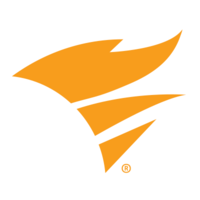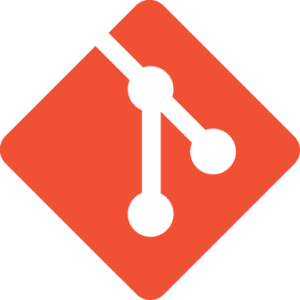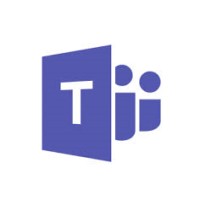Development and operations (DevOps) is the merger of practices, tools and cultural philosophies that increases the ability of an enterprise to deliver applications and services more frequently while improving quality and being cost-effective. By evolving and enhancing products at a rapid pace, DevOps enables enterprises to compete proficiently in the market.
Enterprises that implement traditional infrastructure management and software development processes are likely to be left behind in today’s competitive market, as the modern software development lifecycle encompasses multiple, simultaneous stages of development and testing.
A unified team that performs development, testing, and operations functions is of the essence.
The benefits of DevOps include:
- Faster innovation, market adoption and business efficiency.
- Rapid delivery of releases.
- Practices like continuous integration, continuous delivery and monitoring and logging ensure the reliability of deliverables.
- Automation and consistency help you develop, operate and manage processes at scale.
- A DevOps cultural model enables effective team building.
- Retain control and preserve compliance by using configuration management techniques, fine-grained controls and automated compliance policies.
Also read: AI and Observability Platforms to Alter DevOps Economics
Table of Contents
What are Monitoring Tools in DevOps?
Given the high velocity of development, testing and operations in today’s application lifecycle, frequent code changes are commonplace.
DevOps monitoring tools provide a comprehensive view of a production environment in real-time, automation, and expanded management throughout the application lifecycle – from planning, development and testing to deployment and operations.
When it comes to application and service monitoring, visualizations, real-time streaming and historical replay are critical components. DevOps monitoring enables development teams to quickly and automatically respond to any ruination in the customer experience.
It enables teams to “shift left” to earlier development stages in order to curtail broken production changes. DevOps monitoring tools help teams manage complex development environments at scale while retaining control of the fast nature that is enabled by DevOps.
In this guide, we will dive into all you should know about the top DevOps monitoring tools.
Best DevOps Monitoring Tools
Here are the best DevOps monitoring tools:
SolarWinds AppOptics (Librato)

Key Differentiators
- Infrastructure monitoring enables a 360-degree view of your enterprise infrastructure and provides advanced alerting in real time, host and container maps, and custom infrastructure dashboards.
- The solution provides out-of-the-box support for a variety of frameworks and libraries, including Python, Java, Go, .NET, PHP, Scala and Node.js.
- SolarWinds AppOptics automatically determines the root cause of application performance problems.
- With distributed tracing, exception tracking and live code profiling, you can trace requests across processes, hosts and data centers.
- You can introduce any metric into SolarWinds AppOptics and display them along with infrastructure and application metrics.
- With multi-dimensional tags, you can filter and group data with ease.
- With over 150+ turnkey, cloud-ready integrations, you can obtain data straight from the source. These include AWS and Azure services, Docker, Kubernetes, etc.
- You can try SolarWinds AppOptics free of cost for 30 days. The infrastructure and application monitoring package costs $24.99 per host, per month.
Sensu Go

Key Differentiators
- Offers limitless integrations for monitoring. You can integrate the platforms and tools that your enterprise relies on, including AWS, Azure, Docker, OpenStack, Kubernetes, etc.
- Using Sensu Go’s high-performance enterprise datastore, you can monitor thousands of nodes from a solitary cluster.
- With Sensu Go’s federation capabilities, you can obtain visibility into globally distributed infrastructure.
- Offers comprehensive health monitoring and enables you to collect basic system metrics, custom application metrics and logs. You can integrate with external databases for unified business intelligence (BI).
- Offers incident management and real-time alerting via communication channels like email, SMS and Slack. You can customize alert policies with contact routing and event filters.
- Provides native support for diagnosis and self-healing — execute custom scripts/trigger service restarts when problems are detected, automate repetitive operations and trigger remediation actions via third-party APIs.
- You can automate service discovery
- Sensu Go is available free of cost and is best suited to small-sized companies. Sensu Go Pro is available for $3 per node, per month and is perfectly suited to mid-sized environments. Sensu Go Enterprise is available for $5 per node, per month and is designed for large-sized enterprises.
Git (GitHub, GitLab and Bitbucket)

With the help of the software, you can easily coordinate work among your DevOps team during source code development. The latest source release of Git is version 2.32.0. You can download the software for Windows, Linux/Unix and macOS.
Key Differentiators
- Popular offerings of Git repositories as a service include GitHub, GitLab and Bitbucket.
- Git’s branching model enables frictionless context switching, role-based codelines, feature-based workflow and disposable experimentation.
- Since Git was built to work on the Linux kernel, is written in C and most operations are performed locally, it can effectively handle large repositories in double-quick time.
- As a distributed SCM, there is no single point of failure, as you can create a copy of the entire repository.
- Git provides data assurance, as checksums are used to verify data integrity.
- With staging area, commits can be formatted and reviewed before completion.
- GitHub (free) offers the distributed version control and SCM functionality of Git, along with wikis for every project, continuous integration, task management, feature requests and bug tracking.
- GitLab (free) is a web-based DevOps lifecycle tool. Its applications include continuous integration (CI/CD), SCM, Auto DevOps, DevSecOps, agile development, value stream management and GitOps.
- Bitbucket (now Bitbucket Cloud) is a one-stop destination for project planning and collaboration on code, testing, and deployment. It is available for free (limited users) and in the form of paid plans. Features include pull requests, Bitbucket Pipelines, IP whitelisting, merge checks, code search, issue tracking and Smart Mirroring.
Red Hat Ansible Automation Platform

The platform’s YAML automation language makes it possible to assess, manage, and share automation content across an organization. With searchable collections of pre-composed modules and roles, you can easily create automation.
Key Differentiators
- With standardized and unified IT automation, Red Hat Ansible Automation Platform helps make network management more consistent. You can automate user onboarding, infrastructure provisioning and orchestration, system patching and updating and software installation.
- Red Hat Insights provides unified visibility across platforms. With Red Hat Insights, you can detect, analyze and remediate potential software and configuration problems through automatic alerts.
- Red Hat Insights provides a reporting provision on the status of automation deployments across multiple clusters.
- You can easily access and distribute collections of supported, precomposed content for quick implementation.
- The platform provides developers and business users access to automation resources and services.
- You can automate security practices and collate the tools used in security activities.
- Developers can set up automation to manage, provision and deploy compute infrastructure across environments. By automating processes, you can rapidly move software between testing and production environments.
- The STANDARD package is ideal for enterprise IT operations. The premium package is ideal for mission-critical DevOps. Contact Red Hat Ansible for pricing information. You can try the platform free of cost for 60 days.
Microsoft Teams

Microsoft Teams is the free version of Microsoft’s UCaaS offerings and does not include additional Microsoft Office services and applications. That said, the solution is sufficient if all you need is real-time presence monitoring, individual and group chatting and secure online meetings with up to 100 members, for up to an hour at a time.
Key Differentiators
- You can set up ChatOps with messaging extensions. You can integrate all the components in your DevOps toolchain. By integrating DevOps tools, these applications will publish content directly into team conversations/individual chats, which enables faster resolution of issues, ease of collaboration, quicker update sharing, and better knowledge dissemination.
- Enterprises embedded in the Microsoft tool suite can benefit from Microsoft Teams. You can integrate over 700 applications from the app store to increase team productivity and manage complex projects. You can leverage custom-built applications to address industry-specific needs with the Microsoft Power Platform.
- Microsoft Teams is available in 181 markets and 53 languages. Windows, macOS, Android and iOS users can download and implement the solution.
- Microsoft Teams is free of cost. Microsoft 365 Business Standard is ideally suited to small- and mid-sized organizations and is available for $12.50 per month/per user (annual commitment). Microsoft Office 365 E3 is best suited to large-scale enterprises and is available for $20 per month/per user (annual commitment).
- Microsoft 365 Business Standard and Microsoft Office 365 E3 offer additional perks when compared to Microsoft Teams, including larger meeting participant capacities, longer meeting durations, the ability to record meetings, personal file storage, business email, advanced auditing and reporting and secure cloud storage.
Choosing DevOps Monitoring Tools
SolarWinds AppOptics offers modern infrastructure monitoring, root cause determination of application performance issues, distributed transaction tracing, custom metrics and analytics and several turnkey, cloud-ready integrations. Overall, SolarWinds AppOptics is a handy DevOps monitoring tool.
The Sensu Go observability pipeline provides monitoring for mission-critical systems and is integrated, secure and scalable. The solution offers health checks, custom metrics and logs, alerts and incident management, endpoint management, auto-remediation and monitoring as code. Sensu Go is one of the best DevOps monitoring tools around.
Git is an essential component of DevOps. You can incorporate several services for hosting your Git repositories, including GitHub, GitLab and Bitbucket. If you are looking for a foundation for building and operating enterprise automation at scale, Red Hat Ansible Automation Platform is a fantastic tool.
Microsoft Teams is an excellent solution to connect distributed team members. You can avail of ChatOps, integrate over 700 applications to streamline workflow, build custom applications and host and participate in video conferences.
You can utilize one or more DevOps monitoring tools, so strictly assess each of the tools we detailed and add one or more of them to your DevOps toolchain.
Read next: The Growing Relevance of Hyperautomation in ITOps


